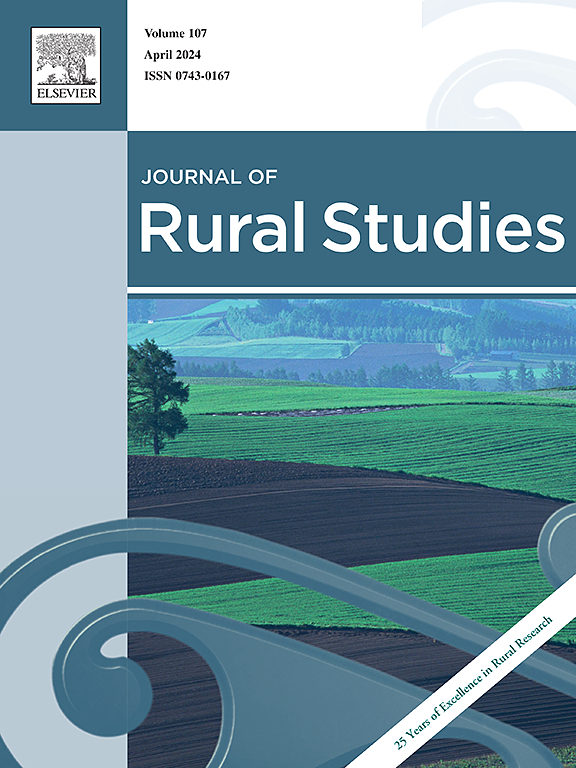德国的城乡移民:是支持 "农村 "还是反对 "城市"?
IF 5.1
1区 社会学
Q1 GEOGRAPHY
引用次数: 0
摘要
多年来,关于德国国内移民问题的讨论主要集中在农村人口向外移民上。自 21 世纪初以来,大城市的移民人数一直保持正平衡。然而,2010 年代初,国内移民模式开始向农村地区转移,这几乎未引起人们的注意。在本文中,我们将首先阐述 2000 年至 2021 年间国内移民的变化。我们将这一时期分为三个阶段,并表明人口集中化的总体模式已转变为人口分散化的过程。这一趋势在 COVID-19 大流行的头两年进一步加剧。其次,基于一项全德人口调查,我们介绍了 2015 年年中至 2020 年年中家庭从城市迁往农村的原因,其中与个人、就业和住房相关的原因最为重要。为了更好地理解城乡迁移(或 "逆城市化"),我们特别关注受访者如何体验城市和城市住房市场,以及他们赋予农村目的地哪些居住特征。我们的研究表明,城乡人口迁移是一个多方面的决定,其中缺乏经济适用房的城市住房市场的结构性障碍起到了相关作用。总之,我们认为,有关城乡迁移的研究需要更系统地探讨结构性因素和个人偏好共同驱动的复杂而偶然的决策这一理念。要充分解释未来关于大流行后国内人口迁移模式的研究结果,就更有必要将长期存在的逆城市化争论扩展到单纯的 "农村 "居住选择之外。本文章由计算机程序翻译,如有差异,请以英文原文为准。
Urban–rural migration in Germany: A decision in favour of ‘the rural’ or against ‘the urban’?
For many years, the debate on internal migration in Germany focused on rural out-migration. Since the early 2000s, large cities have had positive migration balances. Almost unnoticed, however, in the early 2010s the patterns of internal migration started to shift towards rural locations. It was only the COVID-19 pandemic that drew attention to these changing tendencies and the apparent new appreciation of rural living.
In this paper, we will first shed light on the changes in internal migration between 2000 and 2021. We divide this period into three phases and show that the overall pattern of population centralisation transformed into a process of decentralisation. This trend further intensified during the first two years of the COVID-19 pandemic. Secondly, based on a German-wide population survey, we present findings on the reasons why households moved from urban to rural areas between mid-2015 and mid-2020, with personal, employment-related and housing-related reasons being the most relevant. To better understand urban-rural migration (or ‘counterurbanisation’), we pay particular attention to how respondents experienced cities and urban housing markets and which residential characteristics they ascribed to the rural destination. We show that urban-rural migration is a multifaceted decision in which the structural impediments of urban housing markets lacking affordable housing play a relevant part. In conclusion, we argue that research on urban-rural migration needs to more systematically pursue the idea of a complex and contingent decision that is driven by both structural factors and personal preferences. Extending the long-standing counterurbanisation debate beyond a mere residential choice for ‘the rural’ is all the more important to adequately interpret future findings on post-pandemic patterns of internal migration.
求助全文
通过发布文献求助,成功后即可免费获取论文全文。
去求助
来源期刊

Journal of Rural Studies
Multiple-
CiteScore
9.80
自引率
9.80%
发文量
286
期刊介绍:
The Journal of Rural Studies publishes research articles relating to such rural issues as society, demography, housing, employment, transport, services, land-use, recreation, agriculture and conservation. The focus is on those areas encompassing extensive land-use, with small-scale and diffuse settlement patterns and communities linked into the surrounding landscape and milieux. Particular emphasis will be given to aspects of planning policy and management. The journal is international and interdisciplinary in scope and content.
 求助内容:
求助内容: 应助结果提醒方式:
应助结果提醒方式:


